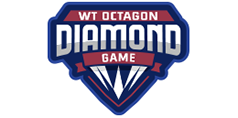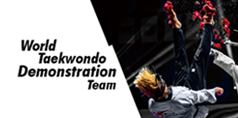
On a battlefield swept by the fearsome killing force of automatic weapons, high explosives and laser-guided airpower, empty handed martial arts have minimal combative utility. This obvious reality, however, does not make taekwondo a redundant skill for a 21st century soldier.
How so? Ask cadets at the United States’ premier military academy, West Point.
“Because we are soldiers, taekwondo translates pretty well – it is like one-on-one combat, or one country versus another country,” said West Point Cadet Anthony Chargualaf. “And it teaches determination; how to persevere through the pain.”
“We have a warrior ethos in the U.S. Army – ‘Leave no man behind,’” Cadet Jacqueline Parker said. “If you are a in a fight, you have to be the last one standing: that translates into the warrior ethos.”
“Techniques are not the sum, you have to have that aggressive mindset,” added Cadet Zewei Peng. “A lot of it is about being more aggressive than the opponent.”
The three members of the West Point Taekwondo Club were part of a 20-person contingent, including 13 cadets, led by the academy’s head coach, Master Ji-ho Choi, president of the Pan American Taekwondo Union. The delegation, who visited Korea on July 28, 2015 for a nine-day run, were undertaking their first-ever tour of Korea.
Stopovers – sponsored by the Korean Cultural Service in New York - included taekwondo hot spots Kyung Hee University in Suwon and Taekwondowon in Muju. The contingent was also lunched on Aug. 5 by WTF President Chungwon Choue, who was presented with a ceremonial saber by the visitors.
All West Point cadets are required to take an elective sport during their term at the academy. Many current members of the 30-strong club had previous taekwondo experience.
“Most of us had background in it before attending West Point, now we are all friends on the team,” said Cadet Anthony Markov. “The inter-collegiate league (which West Point competes in) is very competitive, and all of us, from beginners to black belts, take lots of trips. West Point taekwondo is one family: One team! One fight!”
While a martial art is particularly appropriate exercise for martial men and martial women, taekwondo also synchs with the U.S. Army‘s combatives program, which stresses grappling.
“Taekwondo helps with spacing, with distancing,” said Cadet Havin Na. “Even with combatives, you have to have that feel for distance.”
“They are complimentary,” said Major Greg Bow, West Point’s current taekwondo team captain and day-to-day coach. “If you can handle multiple ranges - with taekwondo (kicking), boxing (punching) and combatives (grappling) – you are a complete fighter.”
Taekwondo’s history at West Point dates back to 2001.
“That spring, some West Point cadets were competing in the Ivy League taekwondo competition and they got their asses kicked,” said Choi, who was at that time coaching the Princeton University team. “I said to them, ‘If you need a little help, I can give you a special class,’ and a week later, this sergeant phoned me and invited me to visit, so I said, ‘Alright.’”
At that time, West Point’s martial arts club was an informal structure, with different stylists practicing together without formal coaching or curriculum. Choi absorbed the students of other martial arts, like karate, and got the club underway.
His coaching paid off. In 2003, at the U.S. National Collegiate Championships in Puerto Rico, West Point won fifth place overall. Then-superintendent of West Point, General William Lennox, was enthused, Choi recalled.
“He had been in U.S. Forces Korea in 1988 during the Seoul Olympics and had seen the taekwondo demonstration,” Choi said. That now-iconic demonstration, the highlight of the Olympic opening ceremony, had been performed by serving Korean troops. “He asked if we could teach taekwondo to all cadets, and have a mass taekwondo demonstration on the West Point parade ground!”
At that time, judo was the official martial art in the U.S. Army, so that plan came to naught – to Lennox’s disgust. Even so, the West Point Taekwondo Club went from strength to strength.
Choi, who still teaches students at Princeton as well as everyday citizens at his personal taekwondo academy, reckons that West Point cadets make near-perfect taekwondo athletes.
“West Point cadets already have discipline and their physical condition is superior - far superior! - to most other students in the United States, so instructing them is so much easier,” he said. “They absorb much faster, which is why taekwondo at West Point has moved so fast to become prominent among university groups.”
Choi – who teaches at West Point free of charge – confesses to special feelings for the cadet students, who, he knows, could be walking into the flames almost immediately after their graduations.
“The former taekwondo team captain, Sal Corma was a little guy, but a prominent leader,” Choi recalled. Corma was killed by booby trap while leading a search party in Afghanistan; Choi joined former West Point taekwondo students to mourn at Corma’s funeral.
“When they graduate, I have that happy-sad moment, I hear, ‘My life no longer belongs to me, but to the U.S. government,’” Choi said. “That is what makes me value these kids more than any other students.”
The sometimes bloody reality of their chosen profession is crystal clear to the cadets themselves.
In Seoul, they visited the Korea Military Academy where their first stop was at the memorial plaque to the West Point class of 1950, which was decimated during the 1950-53 Korean War – a war that never officially ended, and which the United States and South Korea may, one day, have to refight as allies. The cadets held a one-minute vigil of silence.
“We feel that connection,” said Cadet Marco Aveledo Quijada. “We understand what we may be called to do.”




































